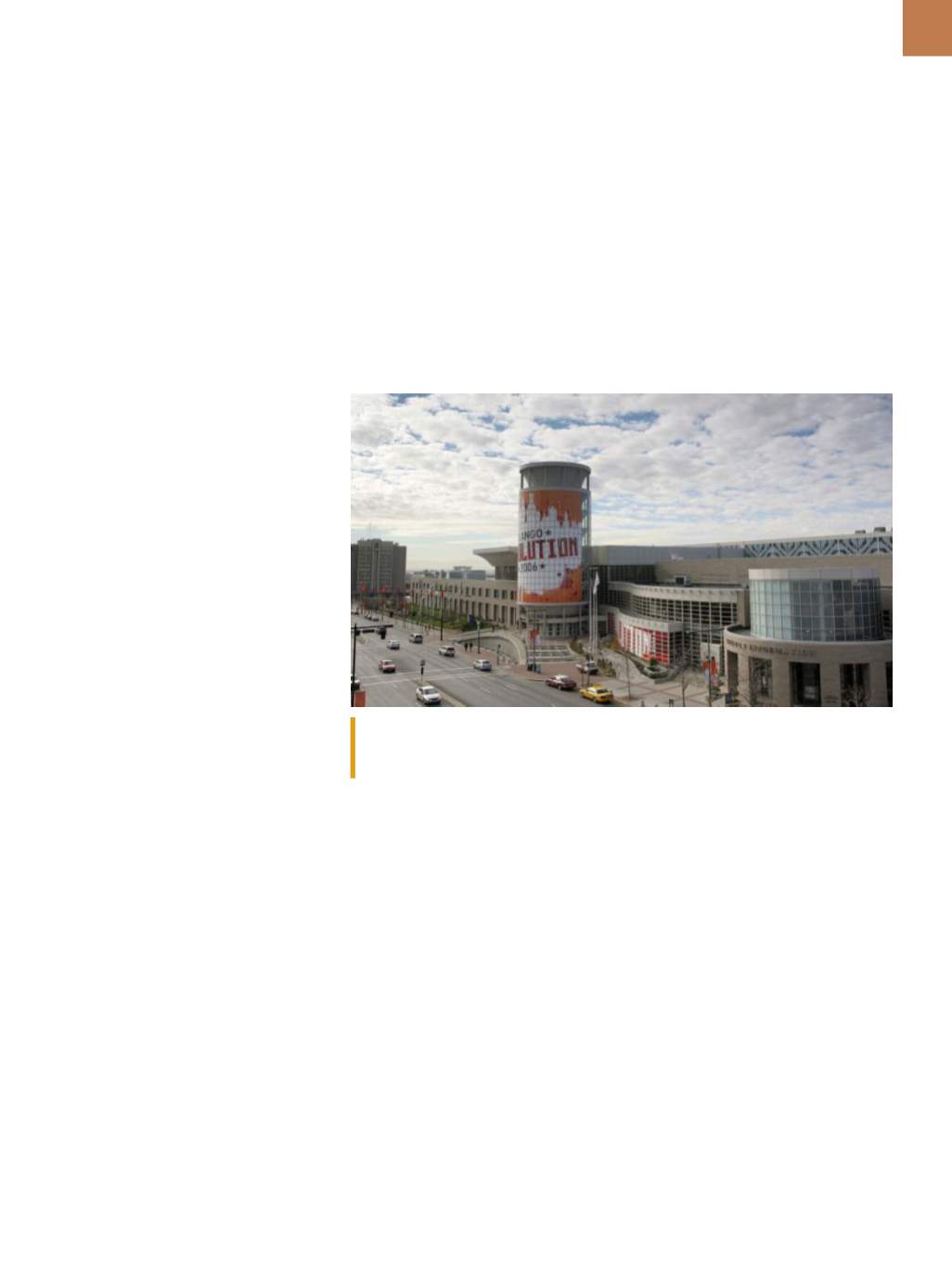

A D V A N C E D
M A T E R I A L S
&
P R O C E S S E S |
S E P T E M B E R
2 0 1 6
2 3
The Salt Palace Convention Center boasts 515,000 sq ft of exhibit space, 164,000 sq ftof
meeting space including a 45,000-sq-ft grand ballroom, and 66 meeting rooms. Courtesy
of AdamBarker.
T
he MS&T partnership brings
together scientists, engineers,
students, suppliers, and other
professionals
to
discuss
current
research and technical applications,
and to shape the future of materials sci-
ence and technology. In addition to the
four organizing societies, NACE Interna-
tional will co-sponsor MS&T16.
PLENARY LECTURES
TUESDAY, OCTOBER 25
8:00 – 10:40 a.m.
ACerS Edward Orton Jr.
Memorial Lecture
Designing Ceramics for Next-
Generation Energy Systems
Bruce Dunn, professor, Department
of Materials Science and Engineering,
University of California, Los Angeles
The ability to design the chemis-
try and nanostructure of ceramics will
continue to have a profound effect on
the performance of electrode materi-
als for electrochemical energy storage.
One significant contribution to the lithi-
um-ion battery field is the development
of nanoscale materials whose shorter
ion and electron path lengths have led
to improvements in energy and power
densities. The development of core-
shell architectures represents another
substantial advancement in the design
of electrode materials. Pseudocapac-
itors based on transition metal oxides
offer the promise of a new generation of
energy storage materials that combine
the high power of capacitors and the
high energy density of battery mate-
rials. Key advances as well as future
trends will be discussed.
AIST Adolf Martens Memorial
Steel Lecture
Enhancing the Fatigue Performance
of Steel: Have We Learned
Anything from the Past?
David K. Matlock, University Emeritus
professor, Colorado School of Mines
Fatigue failures in operating equip-
ment continue to occur even though
extensive research has been done since
the mid-1800s when the important
basic aspects of fatigue were identified
after multiple railroad axle failures led
to several catastrophic accidents in
Europe. At that time, it was realized that
application of cyclic loads could lead to
metal failures at peak applied loads or
stress levels less than required to cause
permanent deformation. In this pre-
sentation, selected historical aspects
of fatigue testing and failures will be
presented, the fundamental basis for
fatigue will be reviewed, and oppor-
tunities to increase the fatigue perfor-
mance, and thus safety, of operating
equipment will be discussed.
ASM/TMS Joint Distinguished Lecture
in Materials and Society
Elegant Solutions: Exploration
and Outcomes that Matter
Julie A. Christodoulou, FASM, Director,
Office of Naval Research
New tools and new ways of using
existing instruments aremade available
to us on a near-daily basis. Materials
MATERIALS SCIENCE &
TECHNOLOGY 2016
OCTOBER 23–27
SALT PALACE CONVENTION CENTER • SALT LAKE CITY


















